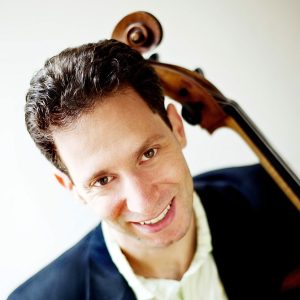
The Britten Cello Suites (Part 3): An Introduction to the Third Suite
Aron Zelkowicz
Britten chose to build his Third Suite for Cello around four pre-existing Russian themes: three tunes taken from Tchaikovsky’s volume of folk-song arrangements, and the Kontakion, the Byzantine chant for the dead taken from the Russian Orthodox liturgy. Rostropovich considered himself Russian Orthodox, and one can appreciate the impact of Britten presenting a score based on this theme as a gift to the cellist in Moscow. The Third Suite also serves as a dual tribute to Shostakovich. The second movement, Marcia, includes the signature “anapest” rhythm found in Shostakovich’s symphonies (“da-da-DUM”), and in a subtle yet ingenious linking, the final statement of the Kontakion in C minor employs the notes C-B-Eb-D: a reordered allusion to Shostakovich’s famous four-note D-S-C-H signature (D-Eb-C-B).
Britten goes about weaving the Russian-themed motifs in inconspicuous ways like a pirate burying treasure throughout the nine movements. The suite as a whole is often obscure, but the Russian tunes break through every now and again like random shafts of light. The Kontakion and the folk song melodies are not heard in their pure, intact state until the end of the final movement, at which point they occur one at a time in direct succession. This technique, known as “hidden variation”, can be thought of as a theme and variations in reverse. The cumulative effect for the audience, then, is that of déjà vu by the time the borrowed melodies are overtly stated.
Throughout Britten’s life and work several consistent themes reappear. Operas like Peter Grimes, Billy Budd, and Death in Venice idealize youthful innocence and mourn the corrupting effects of such adult trappings as war, jealousy, and intolerance. In this suite, nostalgia for the past, the simplicity of youth, and regret about aging are implied in the way the folk tunes and mourner’s chant are manipulated and dissected, only to emerge whole at the end. In the most basic way the piece provides an analogy for the arc of life. A distant, primal chant appears as we encounter religion (Introduzione), drama and conflict gradually emerge and intensify (Marcia), we sing (Canto), we embark on journeys – even if the boat capsizes (Barcarolla), we gain intellect (Fuga), our lives fragment (Recitativo and Moto perpetuo), we achieve the heights of passion and tragedy (Passacaglia). The suite ends on a low C – this is the same note that began the suite and permeated the introduction, as a pizzicato, distant drumbeat, to announce the birth of something. Now we return to the same note that represents our lowest origins, the earth from which we came. The journey finally brings us full circle to our true origins and an acceptance of death. Marked with a diminuendo and ppp, the sound literally dies away. Whether or not the final moments imply more regret than acceptance will vary with the listener’s interpretation, but one should be aware of a sense of cyclical closure. The themes that always comprised part of our growing up have returned in their essential forms before the final rest.
Watch Aron perform Britten’s third suite for cello.
Next up: A British cellist records the Third Suite twice – without realizing it.
Subjects: Repertoire
Tags: Aron, audience, Benjamin Britten, blog, Britten, cello suites, cellobello, consistent themes, cyclical closure, effect, impact, introduction, journey, melodies, Orthodox liturgy, Rhythm, Rostropovich, Russian Themes, Russian-themed motifs, score, Suites, Technique, third suite, tune, Zelkowicz
